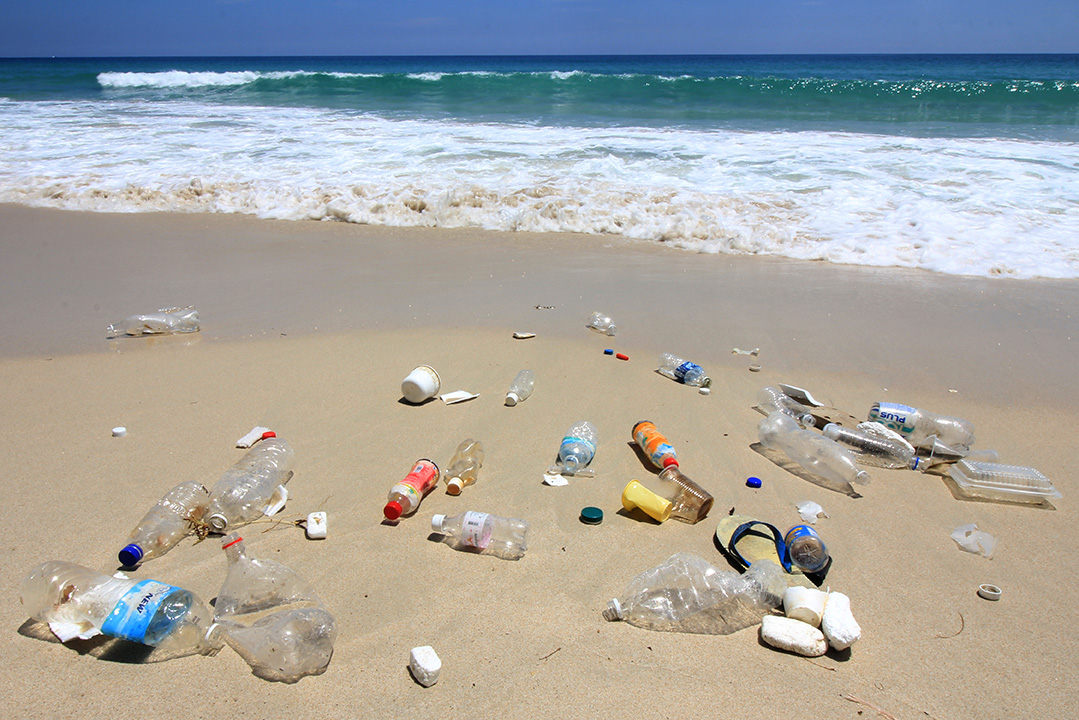
Many responses from environmental groups focused on the need for the U.S. EPA’s National Strategy to Prevent Plastic Pollution to rein in the generation of new plastics. | Rich Carey/Shutterstock
The U.S. EPA asked for input on its draft National Strategy to Prevent Plastic Pollution, and recycling industry stakeholders have answered.
Many of the nearly 92,000 comments on the draft strategy called for federal deposit return systems and extended producer responsibility (EPR) programs. Industry voices also pushed for a greater focus on marine pollution and for the EPA to enforce plastic reduction targets.
The stated objectives of the EPA’s strategy, first released in early May, are to reduce the pollution created by the plastic production process, to improve post-use materials management, to remove escaped materials from the environment and to prevent micro- and nano-plastics from entering waterways.
Considering source reduction
In its comment, environmental group Beyond Plastics called plastic recycling “an abysmal failure” and said the “single most important priority of a federal policy on plastics must be to promote policies and practices that reduce the generation of plastics.”
Beyond Plastics also recommended creating standard legal definitions, regulating reduction targets for packaging producers with clear timelines, removing toxic chemicals from packaging and instituting national enforcement and compliance initiatives to “prohibit false solutions, particularly ‘chemical recycling.'”
Upstream, a waste reduction nonprofit, urged the EPA “to place a greater emphasis on waste prevention and reuse throughout the strategy, rather than downstream waste management and recycling.”
“We also urge the EPA to expand the scope of this strategy beyond plastics,” Upstream’s comment noted, to focus on reducing all instances of single-use items.
The Plastics Industry Association expressed its disappointment with the draft document’s focus on reduction and limits. It recommended recognizing that plastics “serve a critical and sustainable role in modern life” and that the draft be revised to “hold all materials to the same standard and recognize that plastics often outperform other materials environmentally.”
Improved infrastructure, increased recycling rates and circularity should be the focus, the Plastics Industry Association’s comment added.
National standards and definitions
The Green Restaurant Association suggested requiring a high post-consumer material minimum for all disposable products, a national deposit return system and a national disposables fee charged for each disposable product used, with the funds allocated to restaurants that use 100% reusables for in-house and a reusable take-out service.
Meanwhile, on the brands side, the American Beverage Association asked for a definition of “single-use,” support for “proven” EPR and DRS frameworks, studies of reuse and refill options and funding for not only collection but cleanup.
The Consumer Brands Association called for a harmonized nationwide recycling standard and a review of the chasing arrows symbol. It also recommended integrating chemical recycling into the plan, as did the American Chemistry Council.
The Institute of Scrap Recycling Industries (ISRI) called for more policies that improve markets for plastics or that encourage design for recyclability and PCR use. ISRI also suggested excluding “processes that convert materials to fuels, fuel ingredients or energy from being considered as a recycling practice.”
A comment from the Association of Plastic Recyclers (APR) urged the EPA to take the lead in developing and implementing stronger procurement guidelines. The industry group also suggested collecting data on a national level. (APR owns Resource Recycling, Inc.)
The United States Department of the Interior suggested expanding the scope of the strategy to include sea-based sources of marine plastic pollution, such as fishing and shipping vessels, “given the substantial contribution of sea-based sources and the significant and increasing contributions of the United States to marine plastic pollution globally.”
Ocean-cleaning organization LoveBlue echoed the desire to include sea-based material and added it wanted to see more consumer education on the principles and responsibilities of ownership.
Standardizing EPR
A common refrain from respondents was the need to harmonize EPR programs from state to state. One such comment came from the Product Stewardship Institute (PSI), which called for federal EPR for packaging and other products.
“EPR for packaging addresses most of the concerns and questions in the Draft National Strategy to Prevent Plastic Pollution, yet it is only referenced as a solution once,” PSI’s comment read.
Kerrin O’Brien, executive director of the Michigan Recycling Coalition, also emphasized the lack of attention paid to standardized EPR regulations. “Products produced in one community but consumed in many will require coordinated effort at a higher level,” she said.
“It would be great to see EPA prioritize exploring options with producers regarding the impacts of their plastic products and packaging because if it happens like it happened in recycling, it will cost producers much, much more to cover the disparate system of EPR developing now,” O’Brien added.
“There is an enormity of issues, options and opportunities that can and will be undertaken to address these issues,” she continued. “A draft strategy that goes beyond voluntary efforts that can be undertaken in the U.S. and brings some focus to what EPA’s role and goals are in this realm would provide needed leadership, but [these] are missing from this strategy.”

